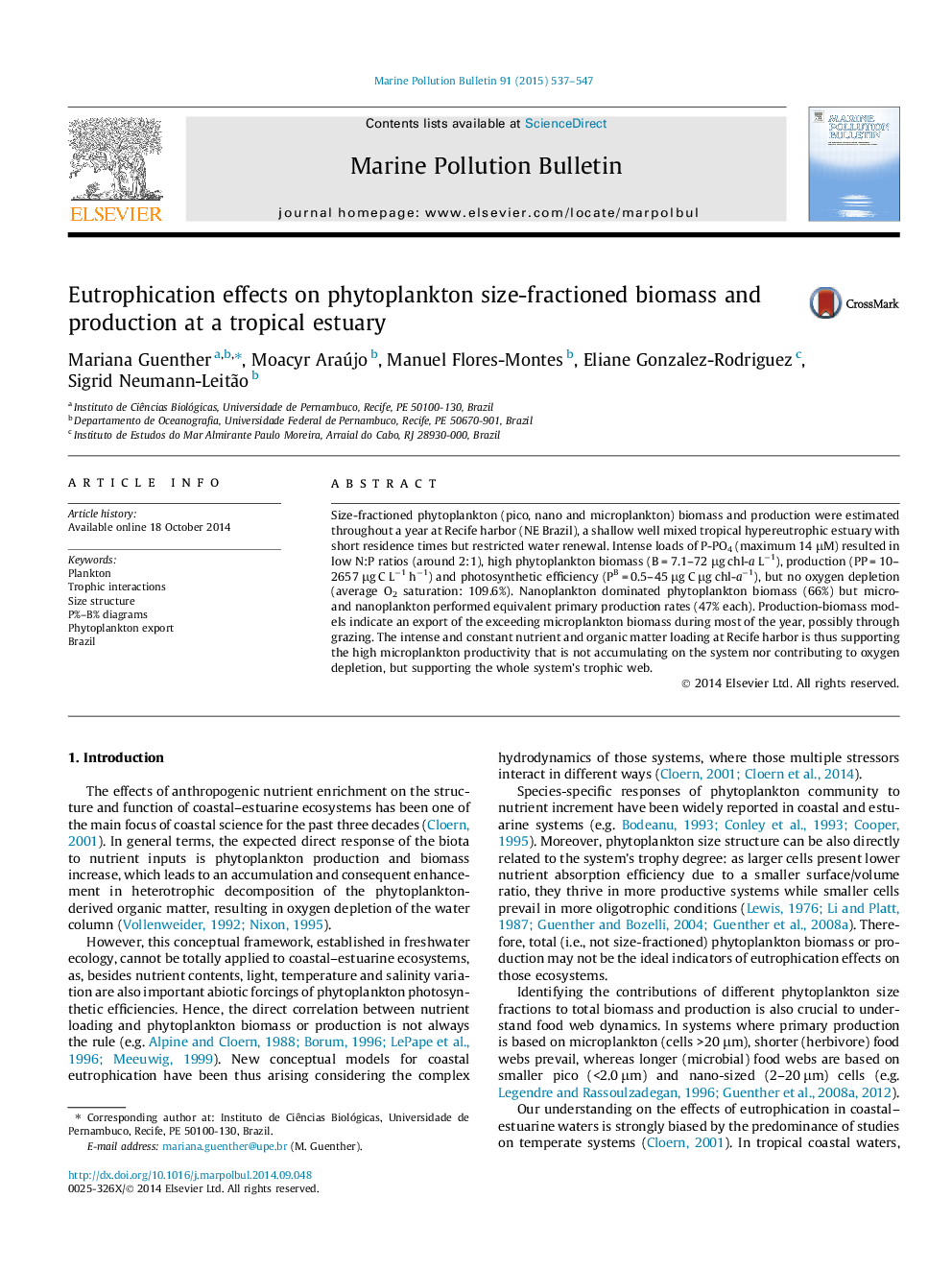| Article ID | Journal | Published Year | Pages | File Type |
|---|---|---|---|---|
| 4476755 | Marine Pollution Bulletin | 2015 | 11 Pages |
•Phytoplankton size-fractioned dynamics were estimated at a tropical estuary.•The system is hypereutrophic due to high loads of inorganic phosphate (P-PO4).•High primary biomass and production rates but no oxygen depletion was observed.•Large phytoplankton seem to be the main support of the estuarine food web.
Size-fractioned phytoplankton (pico, nano and microplankton) biomass and production were estimated throughout a year at Recife harbor (NE Brazil), a shallow well mixed tropical hypereutrophic estuary with short residence times but restricted water renewal. Intense loads of P-PO4 (maximum 14 μM) resulted in low N:P ratios (around 2:1), high phytoplankton biomass (B = 7.1–72 μg chl-a L−1), production (PP = 10–2657 μg C L−1 h−1) and photosynthetic efficiency (PB = 0.5–45 μg C μg chl-a−1), but no oxygen depletion (average O2 saturation: 109.6%). Nanoplankton dominated phytoplankton biomass (66%) but micro- and nanoplankton performed equivalent primary production rates (47% each). Production-biomass models indicate an export of the exceeding microplankton biomass during most of the year, possibly through grazing. The intense and constant nutrient and organic matter loading at Recife harbor is thus supporting the high microplankton productivity that is not accumulating on the system nor contributing to oxygen depletion, but supporting the whole system’s trophic web.
